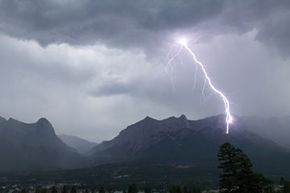For starters, the E stands for energy and the m stands for mass, a measurement of the quantity of matter. Energy and matter are interchangeable. Furthermore, it's essential to remember that there's a set amount of energy/matter in the universe.
If you've ever read Dr. Seuss's children's book "The Sneetches," you probably remember how the yellow, birdlike characters in the story go through a machine to change back and forth between "star-bellied sneetches" and "plain-bellied sneetches."
The number of sneetches remains constant throughout the story, but the ratio between plain- and star-bellied ones changes. It's the same way with energy and matter. The grand total remains constant, but energy regularly changes form into matter and matter into energy.
Now we're getting to the c² part of the equation, which serves the same purpose as the star-on and star-off machines in "The Sneetches." The c stands for the speed of light, a universal constant, so the whole equation breaks down to this: Energy is equal to matter multiplied by the speed of light squared.
Why would you need to multiply matter by the speed of light to produce energy? The reason is that energy, be it light waves or radiation, travels at the speed of light. That breaks down to 186,000 miles per second (300,000 kilometers per second). When we split an atom inside a nuclear power plant or an atomic bomb, the resulting energy released is moving at the speed of light.
But why is the speed of light squared? The reason is that kinetic energy, or the energy of motion, is proportional to mass. When you accelerate an object, the kinetic energy increases to the tune of the speed squared.
You'll find an excellent example of this in any driver's education manual: If you double your speed, the braking distance is four times longer, so the braking distance is equal to the speed squared [source: UNSW Physics: Einsteinlight].
The speed of light squared is a colossal number, illustrating just how much energy there is in even tiny amounts of matter.
A common example of this is that 1 gram of water — if its whole mass were converted into pure energy via E=mc² — contains energy equivalent to 20,000 tons (18,143 metric tons) of TNT exploding. That's why such a small amount of uranium or plutonium can produce such a massive atomic explosion.
Einstein's equation opened the door for numerous technological advances, from nuclear power and nuclear medicine to the inner workings of the sun. It shows us that matter and energy are one.
This article was updated in conjunction with AI technology, then fact-checked and edited by a HowStuffWorks editor.

